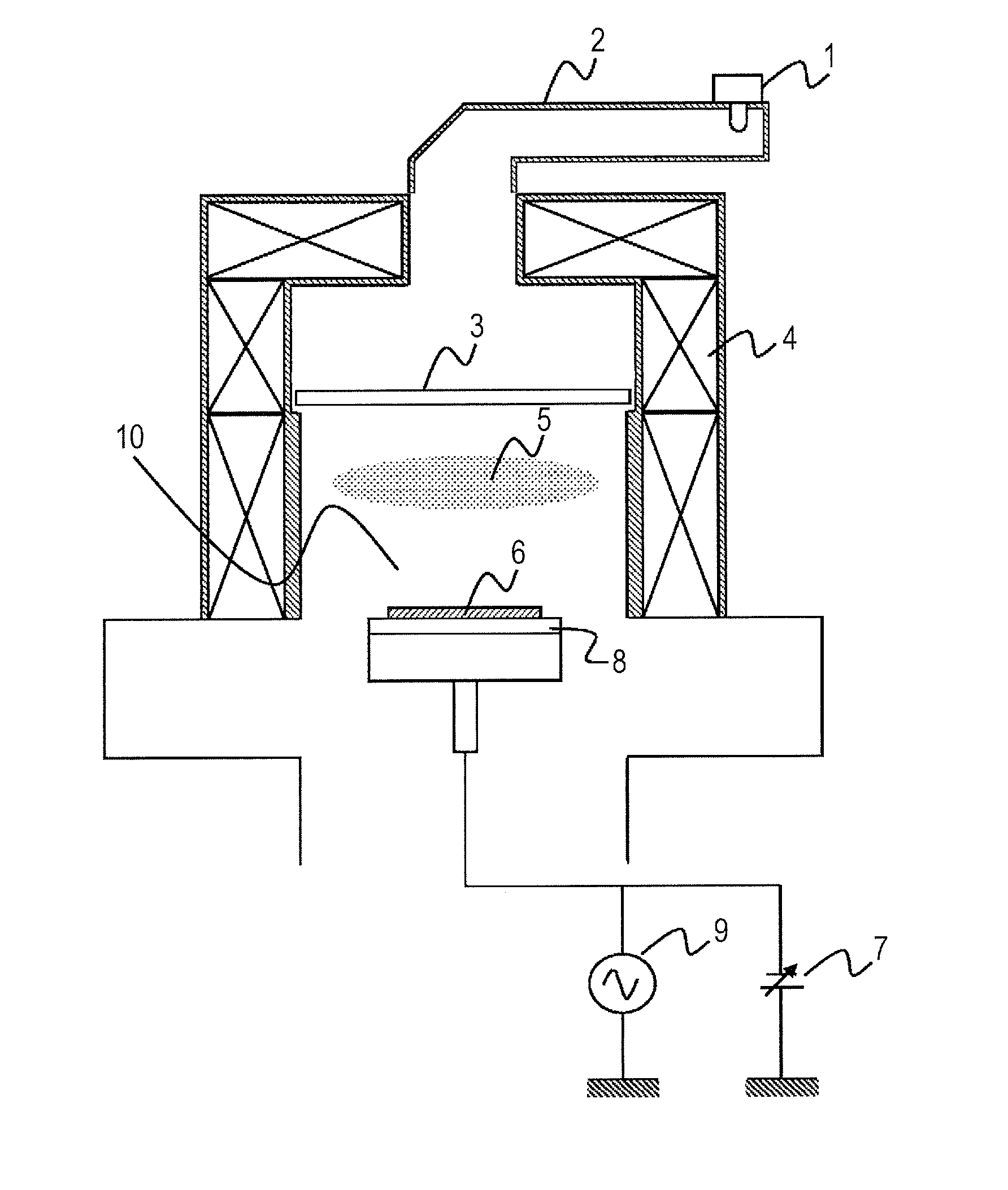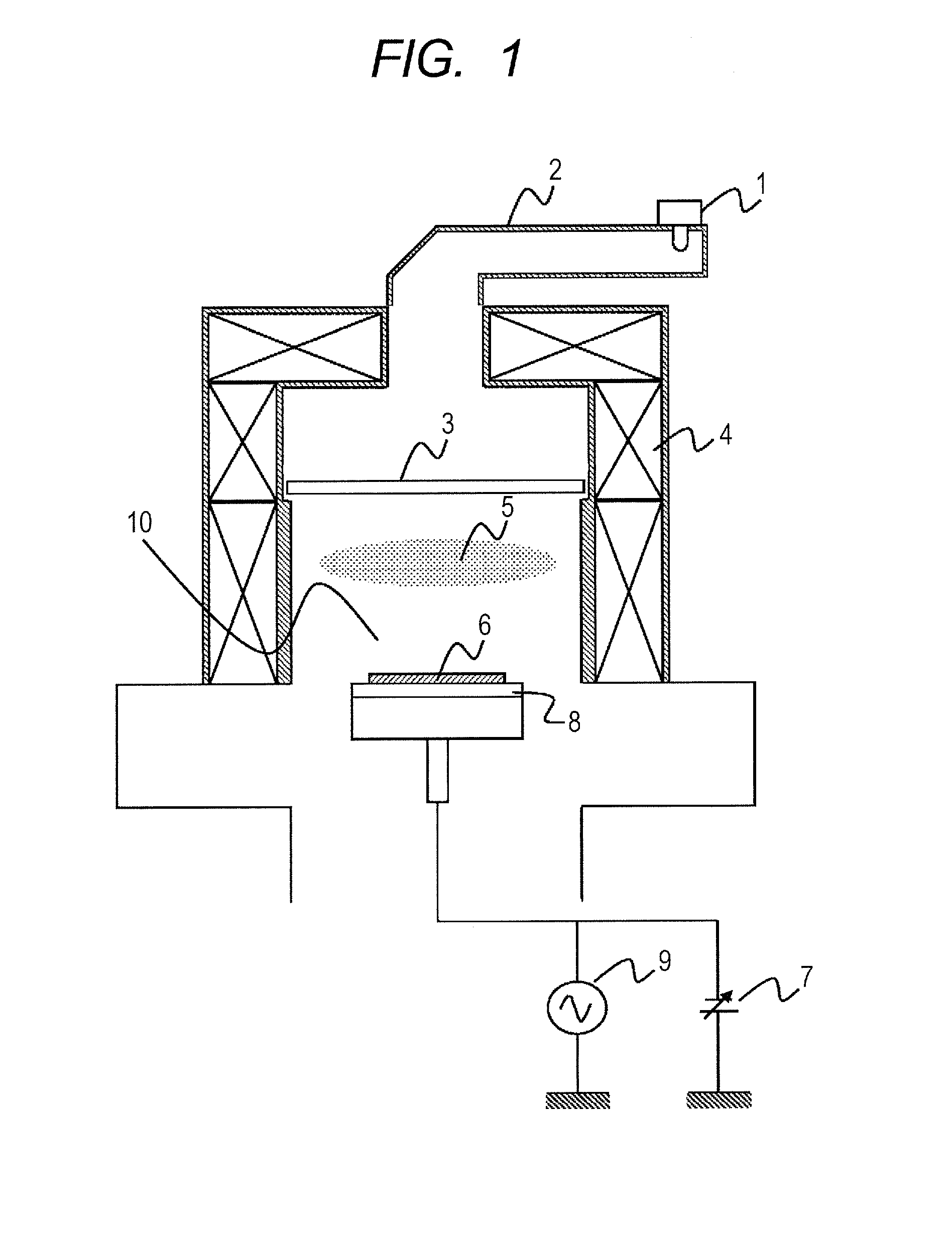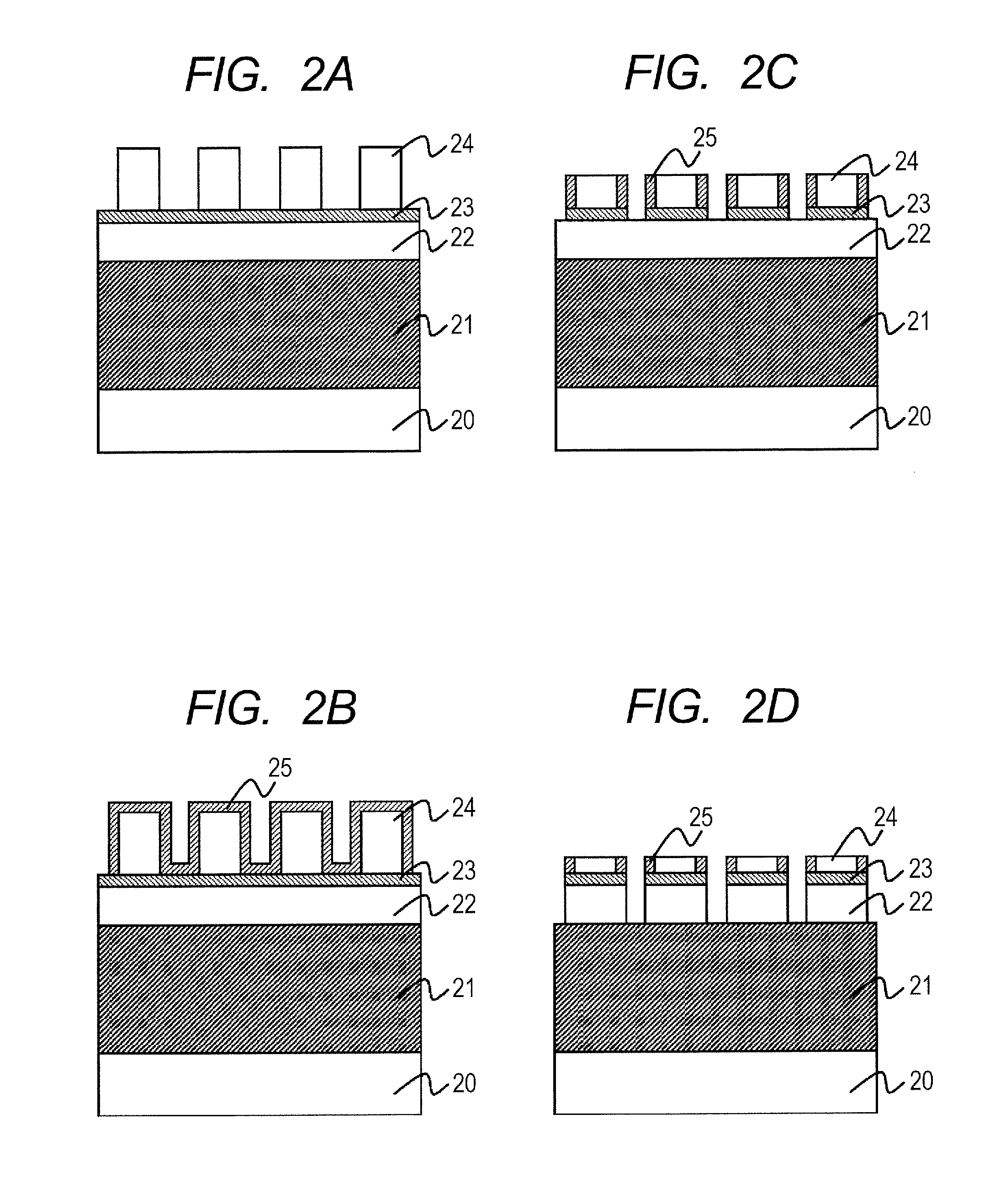Plasma etching method
a technology of etching method and plasma, which is applied in the direction of electrical equipment, optical objects, domestic applications, etc., can solve the problems of shrinkage of device feature dimensions, difficulty in maintaining the height necessary to etch the antireflective coating and the rest, so as to reduce the variation of feature dimension
- Summary
- Abstract
- Description
- Claims
- Application Information
AI Technical Summary
Benefits of technology
Problems solved by technology
Method used
Image
Examples
Embodiment Construction
[0020]With reference to the drawings, an embodiment of the present invention will be described below.
[0021]The description starts with a plasma etching system used to implement the present invention. FIG. 1 is a schematic cross-sectional view of an electron cyclotron resonance (ECR) microwave plasma etching system utilizing microwaves and magnetic fields to generate plasma.
[0022]Microwaves generated in a magnetron 1 pass through a quartz plate 3 via a waveguide 2 to be transferred to a vacuum chamber 10. The vacuum chamber 10 is surrounded by solenoidal coils 4. A magnetic field generated by the solenoidal coils 4 and the microwaves transferred to the vacuum chamber 10 produce electron cyclotron resonance (hereinafter referred to as ECR). The ECR efficiently converts process gas into high density plasma.
[0023]A wafer 6, which is a specimen, is attracted onto a wafer stage 8 by electrostatic attraction force generated by applying DC voltage from an power source for electrostatic chuc...
PUM
 Login to View More
Login to View More Abstract
Description
Claims
Application Information
 Login to View More
Login to View More - R&D
- Intellectual Property
- Life Sciences
- Materials
- Tech Scout
- Unparalleled Data Quality
- Higher Quality Content
- 60% Fewer Hallucinations
Browse by: Latest US Patents, China's latest patents, Technical Efficacy Thesaurus, Application Domain, Technology Topic, Popular Technical Reports.
© 2025 PatSnap. All rights reserved.Legal|Privacy policy|Modern Slavery Act Transparency Statement|Sitemap|About US| Contact US: help@patsnap.com



